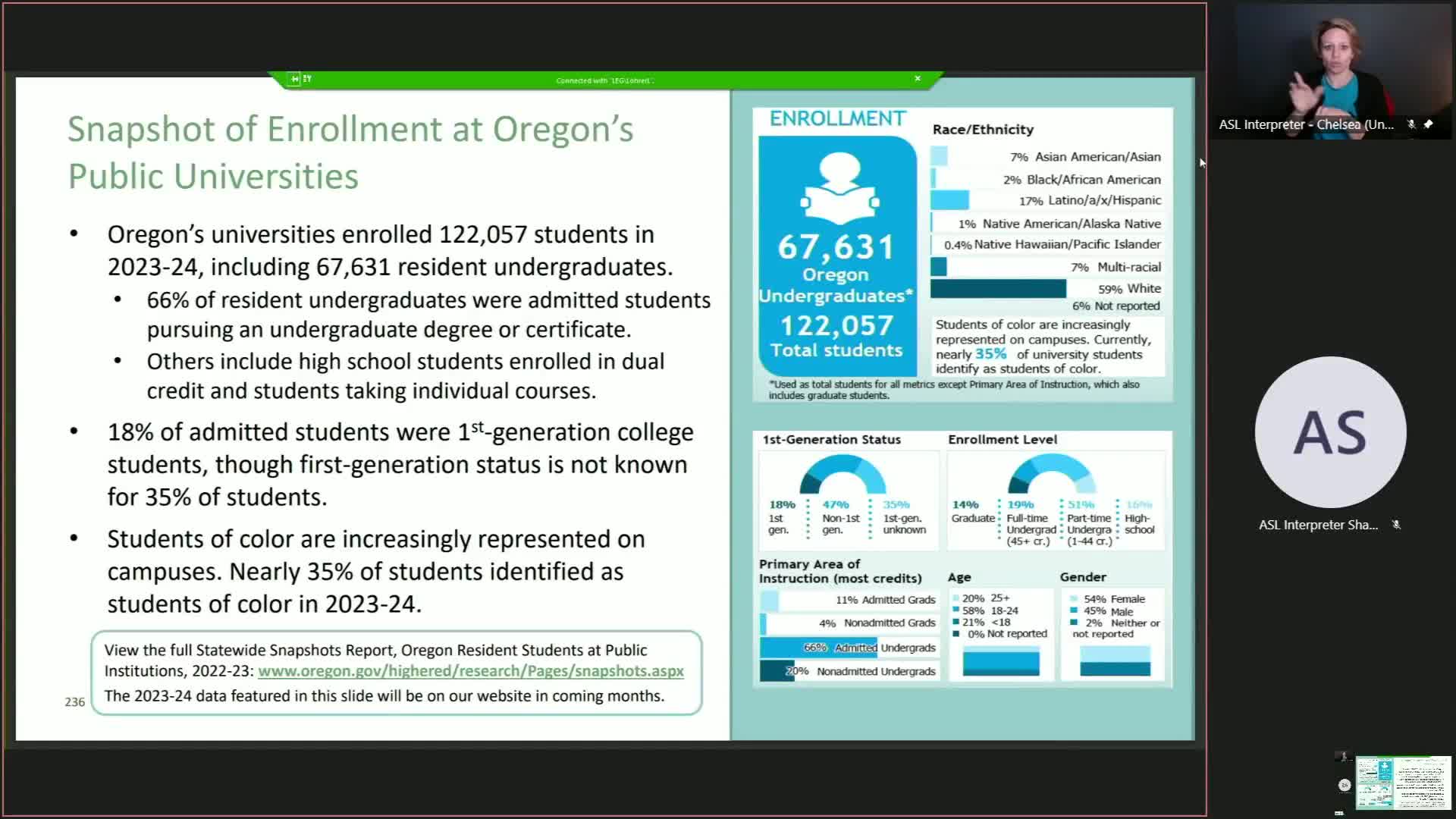Oregon universities report stable enrollment amid growing diversity and completion gaps
April 07, 2025 | Education, Ways and Means, Joint, Committees, Legislative, Oregon
Thanks to Scribe from Workplace AI , all articles about Oregon are free for you to enjoy throughout 2025!

This article was created by AI using a video recording of the meeting. It summarizes the key points discussed, but for full details and context, please refer to the video of the full meeting. Link to Full Meeting
A significant focus was placed on the diversity of the student body. Nearly 20% of the enrolled students were first-generation college attendees, while approximately 35% identified as students of color—a figure that has been steadily increasing. Despite a decline in the number of admitted undergraduate students, overall enrollment has remained stable over the past decade.
The demographic breakdown revealed that while white students still represent nearly 60% of the population, there has been growth in the number of students identifying as having two or more races, as well as stability among African American, Native American, and Pacific Islander students. Notably, one in five community college students seeking credentials transitions to a university within four years, although these students often take longer to graduate due to various factors, including part-time enrollment.
The meeting also addressed the performance outcomes of first-time freshmen compared to transfer students, indicating a narrowing gap in graduation times and credit accumulation. However, disparities based on race, ethnicity, and first-generation status persist, with significant gaps in completion rates still evident. In the last academic year, 67% of first-time, full-time university freshmen graduated within six years, marking a slight increase from the previous year, yet challenges remain in closing the completion gaps.
As the committee continues to monitor these trends, the focus remains on enhancing support for underserved groups, ensuring equitable access to higher education, and addressing the barriers that contribute to these disparities. The discussions underscored the importance of ongoing efforts to foster a more inclusive educational environment in Oregon's universities.
Converted from Joint Committee On Ways and Means Subcommittee On Education 04/07/2025 1:00 PM meeting on April 07, 2025
Link to Full Meeting
Comments
View full meeting
This article is based on a recent meeting—watch the full video and explore the complete transcript for deeper insights into the discussion.
View full meeting
